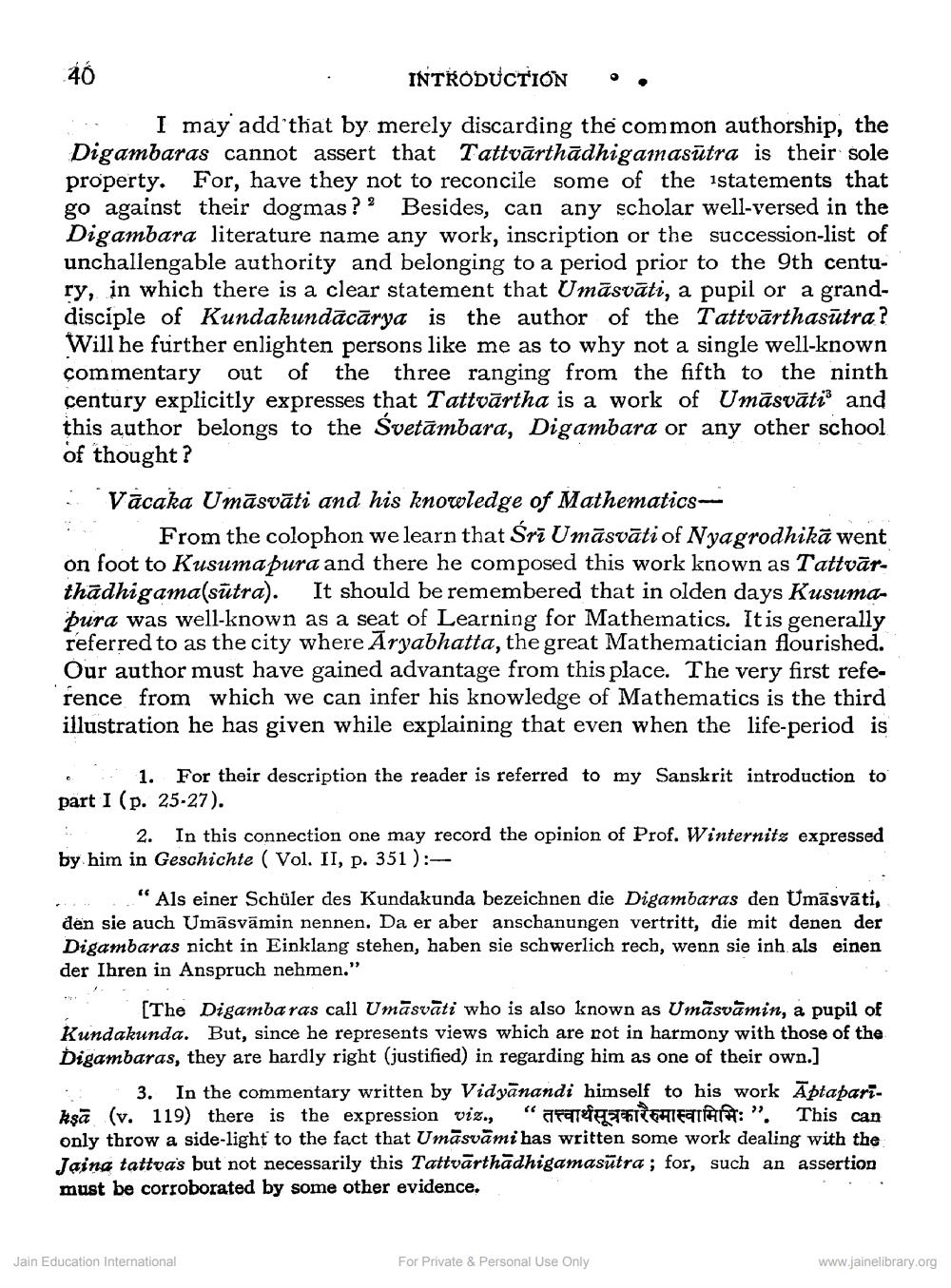________________
INTRODUCTION
O.
I may add that by merely discarding the common authorship, the Digambaras cannot assert that Tattvārthādhigainasūtra is their sole property. For, have they not to reconcile some of the statements that go against their dogmas? Besides, can any scholar well-versed in the Digambara literature name any work, inscription or the succession-list of unchallengable authority and belonging to a period prior to the 9th century, in which there is a clear statement that Umāsvāti, a pupil or a granddisciple of Kundakundācārya is the author of the Tattvārthasutra? Will he further enlighten persons like me as to why not a single well-known commentary out of the three ranging from the fifth to the ninth century explicitly expresses that Tattvārtha is a work of Umāsvāti and this author belongs to the Svetāmbara, Digambara or any other school of thought ? Vācaka Umāsvāti and his knowledge of Mathematics
From the colophon we learn that Śrī Umāsvāti of Nyagrodhika went on foot to Kusuma pura and there he composed this work known as Tattvār. thādhigama(sutra). It should be remembered that in olden days Kusumapura was well-known as a seat of Learning for Mathematics. It is generally referred to as the city where Aryabhatta, the great Mathematician flourished. Our author must have gained advantage from this place. The very first reference from which we can infer his knowledge of Mathematics is the third illustration he has given while explaining that even when the life-period is
1. For their description the reader is referred to my Sanskrit introduction to part I (p. 25-27).
2. In this connection one may record the opinion of Prof. Winternits expressed by him in Geschichte ( Vol. II, p. 351 ) :
.... "Als einer Schüler des Kundakunda bezeichnen die Digambaras den Umāsvāti, den sie auch Umāsvāmin nennen. Da er aber anschanungen vertritt, die mit denen der Digambaras nicht in Einklang stehen, haben sie schwerlich rech, wenn sie inh als einen der Ihren in Anspruch nehmen."
(The Digamba ras call Umāsvāti who is also known as Umāsvāmin, a pupil of Kundakunda. But, since he represents views which are not in harmony with those of the Digambaras, they are hardly right (justified) in regarding him as one of their own.]
3. In the commentary written by Vidyānandi himself to his work Āptaparikşā (v. 119) there is the expression viz., "arai LETAIFHIEQTAR: ". This can only throw a side-light to the fact that Umāsvāmi has written some work dealing with the Jaina tattvas but not necessarily this Tattvarthadhigamasūtra ; for, such an assertion must be corroborated by some other evidence.
Jain Education International
For Private & Personal Use Only
www.jainelibrary.org




